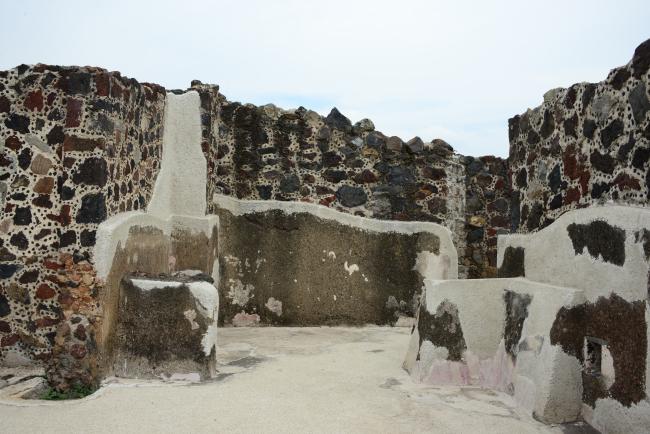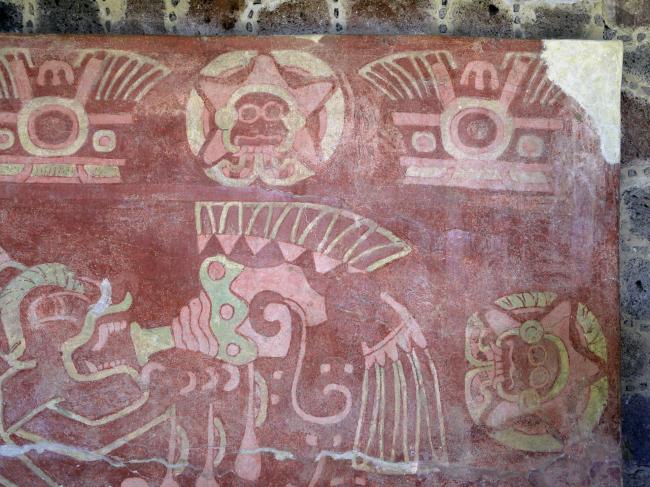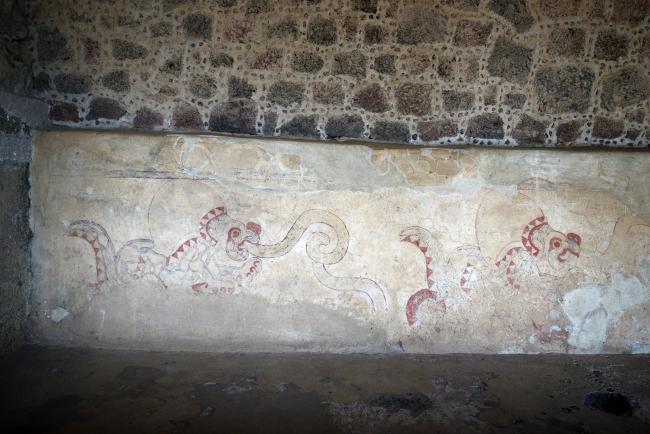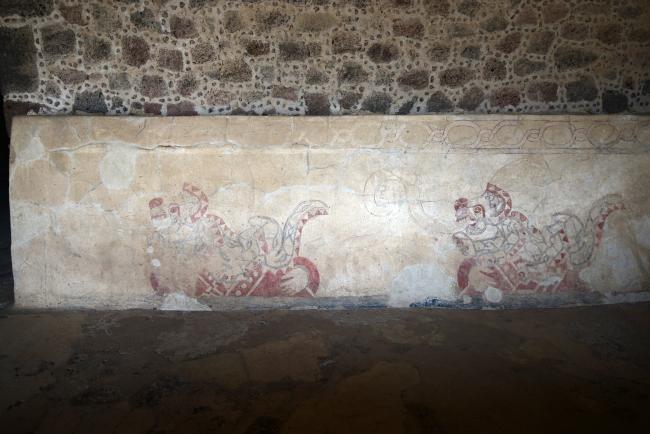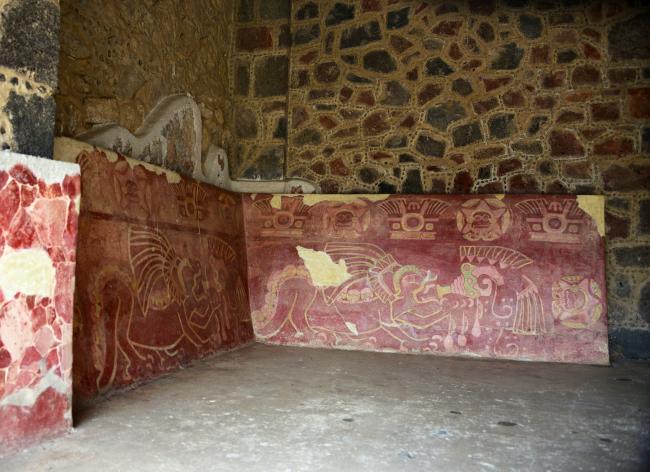
Patio de los Jaguares
Estructura
This complex is located to the west of the Palacio del Quetzalpapálotl. In the porticoed walls of its precincts are exposed extraordinary images of jaguars in two versions: a procession of richly dressed felines, that carry in the snout a musical instrument of great feathered shells, and small jaguars wrapped with a reticulated net that are guarded by two human hands.
Felines with shells playing a snail: The scene of this mural, located in the Patio of the Jaguars, depicts a feline of elongated body in dark red color. The head is slightly tilted upwards; the eye looks like a design of curved lines in pink; the erect and rounded ears are above and behind the eyebrows; the muzzle is open and inside it teeth and fangs show; a small circular nose can be seen.
The headdress is composed of a plume holder or rigid diadem of short feathers, and a plume of five long feathers that are directed upwards and backwards; an ornament of symbolic character, composed by a row of bivalve shells, runs along the animal's back behind the plume holder up to the tail. The snail that is in front of the snout of the feline is constituted of a sort of tube or mouthpiece with flange; it is composed of three sections: a flared one of red bottom and green striations, the other one is a species of green band in zigzag with three green points in its vertical axis, and finally the great spiral. Below the left claw of the feline there are also three red drops.
Everything is framed by a border composed of two images: the first is a feather headdress and the other is a face, which could be Tlaloc, in the center of a star.
Fuente, Beatriz de la (coord.), 1995, La pintura mural prehispánica en México Teotihuacán, volume I, Mexico, UNAM/IIE.
Reticulated felines: Another of the most representative murals of the Patio de los Jaguares represents a feline in profile. Its body is green and is covered with a strong blue reticule; a blue line also defines its outline; on the head we can see the round eye with concentric circles, bordered in its upper half by a wavy red band and a half fan of short feathers that represents the eyebrow; the open muzzle reveals the gum of the upper jaw, three teeth and a long curved fang; the nose is a sort of red scroll with a curved appendage in the center, and the ears are seen from the front as two erect plates. The narrow body has a drooping belly; its forelimbs support the right claw and the left claw is directed forward; the blue claws are surrounded by a light red ring. The tail is raised in an S shape; a band composed of red and green triangles runs along its back, as well as the back of the left limbs and the lower part of the tail. The headdress is made up of two parts: a diadem or tuft holder that repeats the design of red and green triangles, and a plume of long green feathers that curve downward to touch the body. Two continuous virgules, narrow and extended, emerge from the open jaws of the feline, inside of which is a band of scrolls. The border is limited by two straight bands, and in its interior there are two other bands that undulate and intertwine forming a sort of chain, in which wide loops alternate with narrow loops; a blue band limits the wall in its lower part.
Fuente, Beatriz de la (coord.), 1995, La pintura mural prehispánica en México Teotihuacán, volume I, Mexico, UNAM/IIE.


